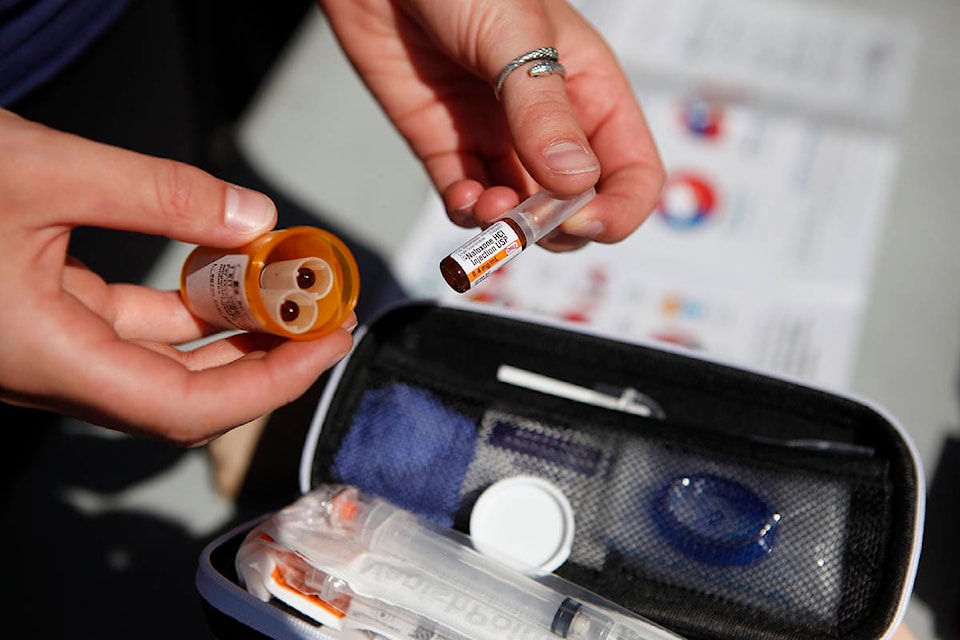More than one million naloxone kits have been shipped to sites throughout the province amid an overdose crisis that’s killed more than 8,300 people since it was declared a public health emergency in 2016.
The kits are used to reverse opioid overdoses as part of the Take Home Naloxone program that’s been running since 2012. In 2016, the program was amended to no longer require a prescription and expanded to pharmacies and adn community sites. There are more than 1,860 distribution sites in B.C.
“Far too many people continue to lose their lives to toxic, illicit drugs – it is tragic and unacceptable,” said Mental Health and Addictions Minister Sheila Malcolmson. “Naloxone is an important tool that saves thousands of lives, but we know it is only one of many tools that is needed. B.C. is working from every angle to create a system of care that supports everyone, including expanding access to safer supply, working toward decriminalization, and increasing treatment options. We know there is much more to do and we are making the necessary changes needed to turn this crisis around.”
According to the B.C. Centre for Disease Control, the Take Home Naloxone program averted 3,000 deaths between the start of 2105 and March of this year, but advocates said more needs to be done.
“Naloxone is a life saving tool for sure, but it is not enough,” said Jessica Van Norren, a program manager with Rain City Housing & Support Society who advises BCCDC as a person with lived or living experience of substance use through the Peer2Peer program. “Five years into the overdose crisis and we are still losing our friends, family and colleagues at unprecedented numbers. I have responded to hundreds of overdoses, and all but one has been reversed. In a time of a poisoning epidemic, and now benzos now being in our substances, naloxone is not enough.”
The overdose crisis appeared to lessen in 2019, when the province recorded 986 deaths compared to a record high 1,549 the year prior. However, the COVID-19 pandemic saw fatal overdoses escalate again last year, with the province reaching a grim new record of 1,726 lives lost to illicit drugs in 202o – an average of five deaths each day.
Experts have said the increase in deaths is linked to both isolation and a more toxic drug supply brought on by the pandemic.
Paul (last name not provided), a member of the organization PEEP which advises the BCCDC on the lived experiences of drug users, wrote that the solution needs to involve more than reversing overdoses.
“I believe naloxone is not enough, it does save lives but it’s only an afterthought, a band-aid solution, we have to focus on preventing overdoses, and the only solution I feel, is safer supply. Offer folks many options, in order to be able to meet people where they are at, if we decriminalize all substances and make substance misuse a medical issue, not a criminal one, more people would get the care they need,” he said.
READ MORE: Toxic drug crisis disproportionately killing B.C. First Nations people
